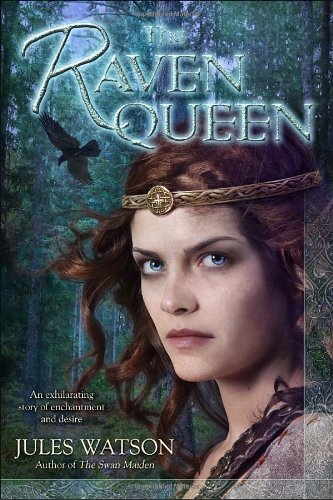The Raven Queen
Other writers have tackled Ireland’s Iron Age legends and their compelling magic, a magic thoroughly mixed with the earthy business of cattle raids and ale. But no one has done it better than Jules Watson in The Raven Queen. This novel brings Maeve, a goddess and perhaps a historical battle queen of Iron Age Ireland, so convincingly to life that she lingers long after the last page is turned and the book finished.
Raven Queen begins with the young queen fleeing her third husband, King Conor of Ulaid, whose greed has corrupted him. Now he threatens not only Maeve but all of Ireland. Conor was number three for Maeve because her father, the king of Connacht (Connaught), serially married her off to various Irish kings as power politics demanded. Maeve, in response, hardened her heart against the hurt of a world that never stopped using her. Promiscuous by necessity, she doesn’t trust anyone, and few trust her. Neither her ailing father nor her brutal brother welcomes her home. She’ll fight her brother in order to rule Connacht, for she believes she’ll better protect her people than he could.
In between her political maneuverings and bloody, harsh, yet mystical battles, Maeve stumbles upon friendship and then love with a blinded druid, Ruán, who is wrestling with how his hubris caused the death of a child. The Sídhe, spirits or fairies – who describe themselves as a bridge between “Thisworld” and the world beyond – help him. Ruán, in turn, urges Maeve to surrender to love and to find a softer part of her own nature, loving rather than striving.
Watson masterfully lures the reader into Ruán and Maeve’s world, a world that is real and magical at the same time: brutal, grand, and lovely. I loved it.










